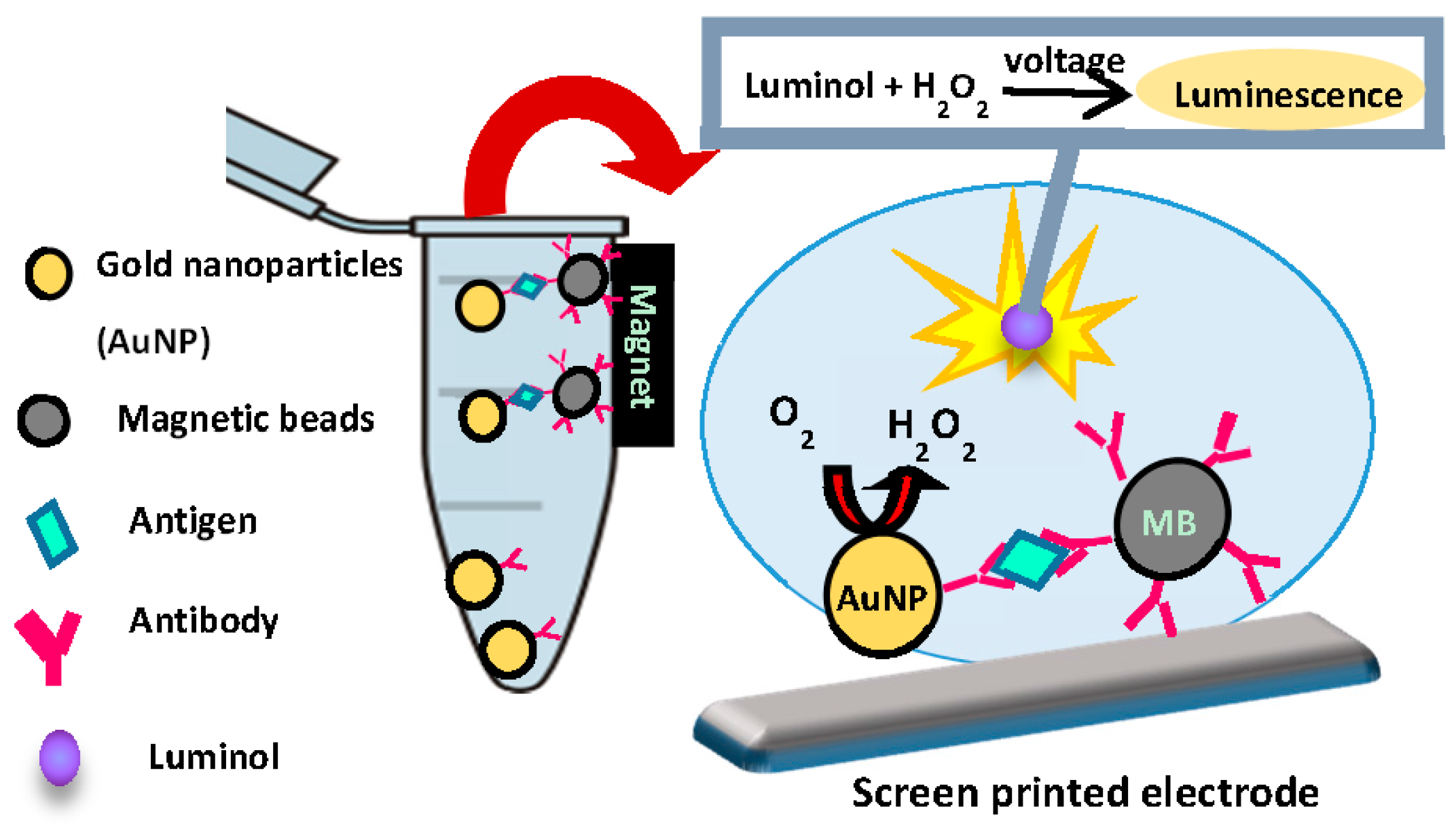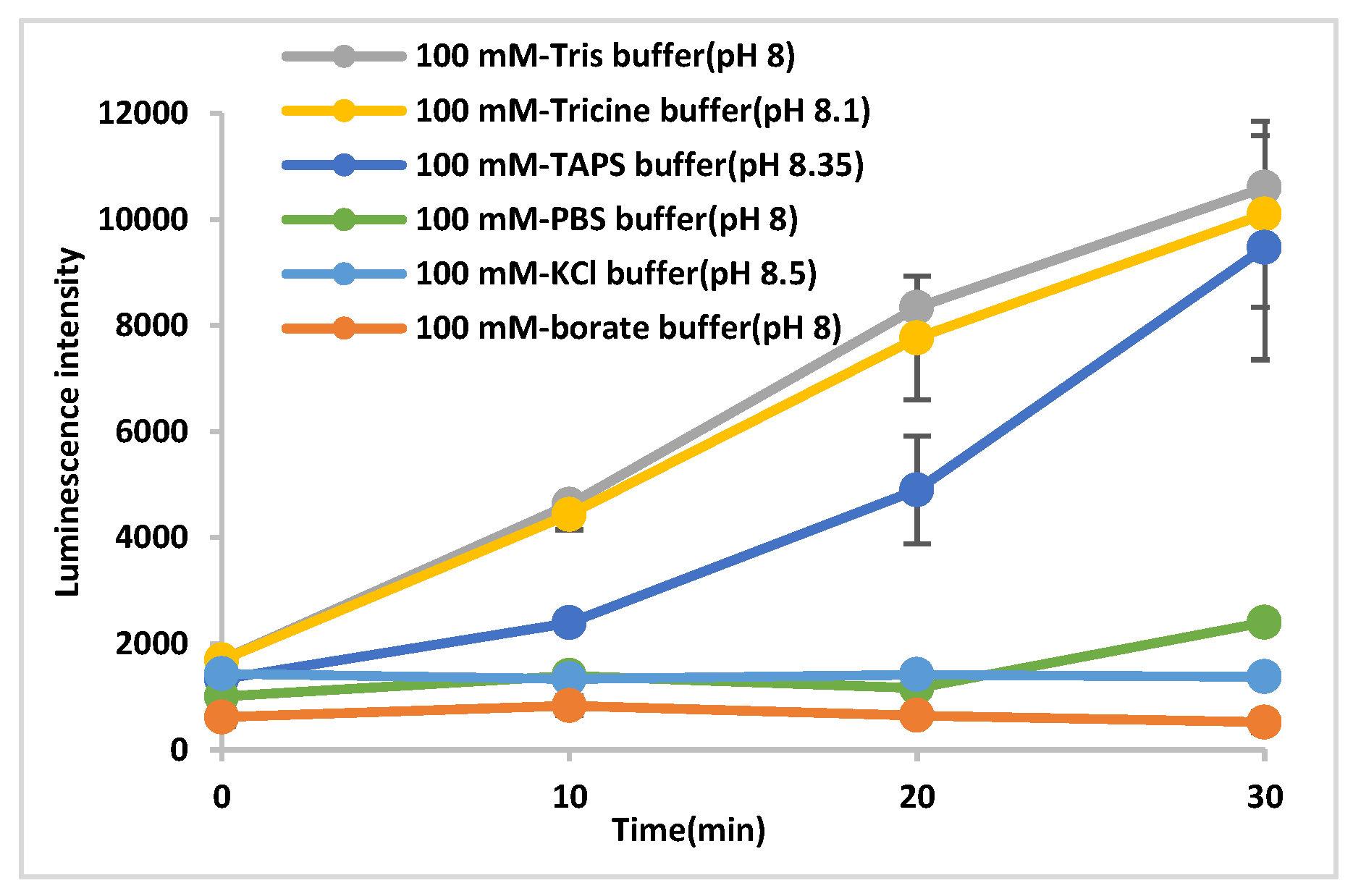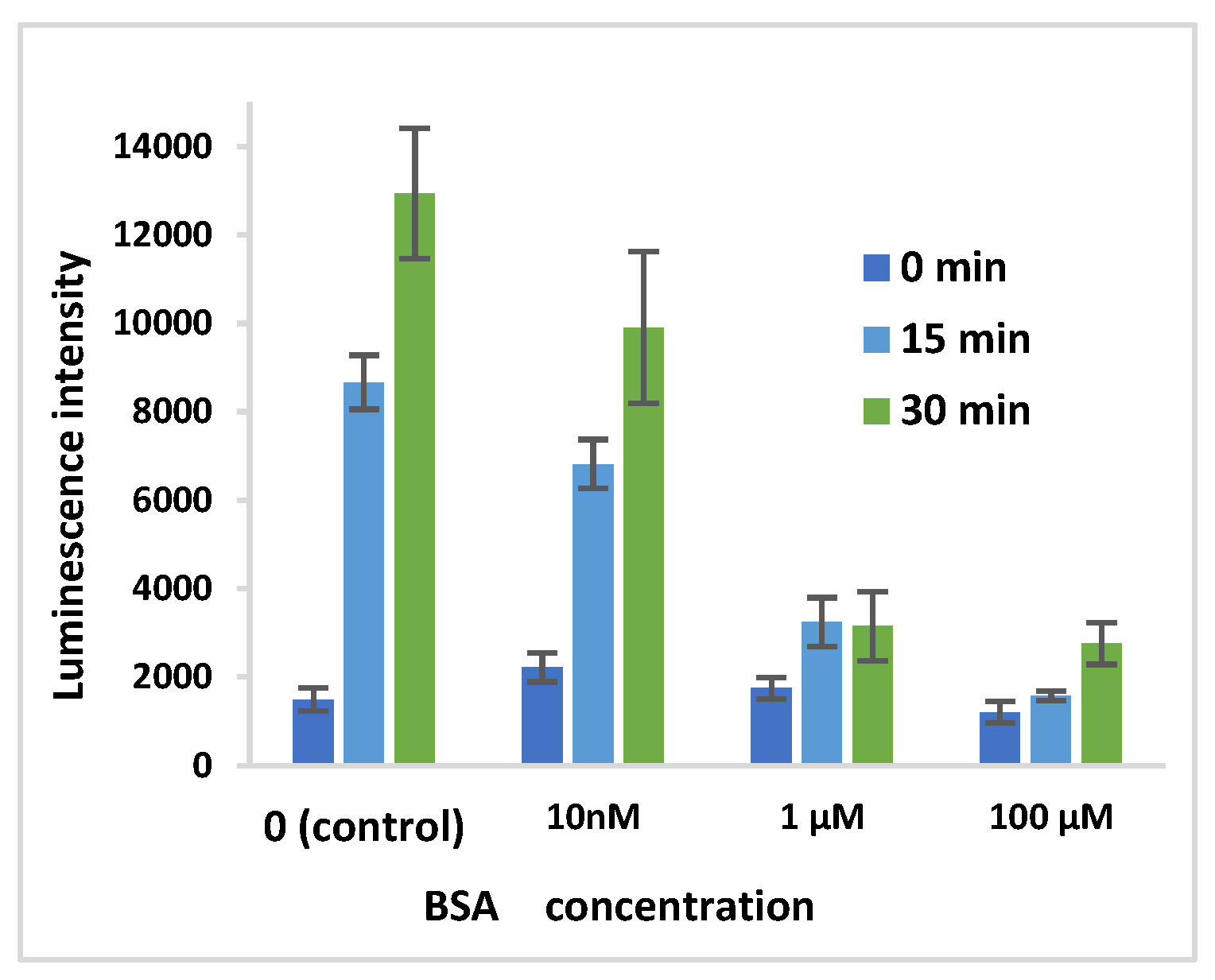Electrochemiluminscence Based Biosensors with AuNP Showing Catalytic ROS Generation †
Abstract
:1. Introduction
2. Materials and Methods
2.1. Reagents and Chemicals
2.2. Instruments
2.3. ECL Measurement Procedure for ROS Generation from AuNPs
2.4. Antibody Modification on Magnetic Beads
2.5. Antibody Modification on AuNP
2.6. ECL Immunoassay for IgA
3. Results and Discussion
3.1. Characterization of AuNP Catalysis
3.2. Analytical Performance of the ECL Immunoassay for IgA Using AuNP and MB
4. Conclusions
Conflicts of Interest
References
- Yuki, I.; Masato, S. Quenched Electrochemiluminescence Imaging using Electro-Generated Substrate for Sensitive Detection of Catalase as Potential Enzyme Reporter System. Electrochem. Acta 2017, 240, 447–455. [Google Scholar] [CrossRef]
- Parajuli, S.; Miao, W. Sensitive determination of triacetone triperoxide explosives using electrogenerated chemiluminescence. Anal. Chem. 2013, 85, 8008–8014. [Google Scholar] [CrossRef] [PubMed]
- Ismail, N.S.; Le, Q.H.; Hasan, Q.; Yoshikawa, H.; Saito, M.; Tamiya, E. Enhanced Electrochemiluminescence of N-(aminobutyl)-N-(ethylisoluminol) Functionalized Gold Nanoparticles by Graphene Oxide Nanoribbons. Electrochim. Acta 2015, 180, 409–418. [Google Scholar] [CrossRef]
- Nagatani, N.; Inoue, Y.; Araki, A.; Ushijima, H.; Hattori, G.; Sakurai, Y.; Ogidou, Y.; Saito, M.; Tamiya, E. Rapid sensing of antioxidant capacity based on electrochemiluminescence induced by electrochemically generated reactive oxygen species. Electrochim. Acta 2016. [Google Scholar] [CrossRef]
- Ismail, N.S.; Le, Q.H.; Huong, V.T.; Inoue, Y.; Yoshikawa, H.; Saito, M.; Tamiya, E. Electrochemiluminescence based enzymatic urea sensor using nanohybrid of isoluminol-gold nanoparticle-graphene oxide nanoribbons. Electroanalysis 2016, 2, 28. [Google Scholar] [CrossRef]
- Huang, X.P.; Li, Y.Q. A novel reverse fluorescent immunoassay approach for sensing human chorionic gonadotropin based on silver-gold nano-alloy and magnetic nanoparticles. Anal. Bioanal. Chem. 2016, 408, 619–627. [Google Scholar] [CrossRef] [PubMed]





Publisher’s Note: MDPI stays neutral with regard to jurisdictional claims in published maps and institutional affiliations. |
© 2017 by the authors. Licensee MDPI, Basel, Switzerland. This article is an open access article distributed under the terms and conditions of the Creative Commons Attribution (CC BY) license (https://creativecommons.org/licenses/by/4.0/).
Share and Cite
Higashi, Y.; Mazumder, J.; Yoshikawa, H.; Saito, M.; Tamiya, E. Electrochemiluminscence Based Biosensors with AuNP Showing Catalytic ROS Generation. Proceedings 2017, 1, 500. https://doi.org/10.3390/proceedings1040500
Higashi Y, Mazumder J, Yoshikawa H, Saito M, Tamiya E. Electrochemiluminscence Based Biosensors with AuNP Showing Catalytic ROS Generation. Proceedings. 2017; 1(4):500. https://doi.org/10.3390/proceedings1040500
Chicago/Turabian StyleHigashi, Yui, Joyotu Mazumder, Hiroyuki Yoshikawa, Masato Saito, and Eiti Tamiya. 2017. "Electrochemiluminscence Based Biosensors with AuNP Showing Catalytic ROS Generation" Proceedings 1, no. 4: 500. https://doi.org/10.3390/proceedings1040500



